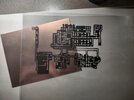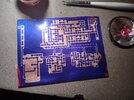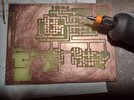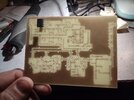Okay I'll tell you about the easiest ones I know of .
Years ago Radio Shack and others sold simple remote control toys on the order once for left and twice for right...
These remotes are actually easy to identify as they do not have the "must accept all and must not create any interference" language of part 15.
These devices will have one of the "alpha" frequencies in it.
3A,7A,11A,15A,19A.
Simply a TX crystal from any early walkie talkie will get you in band.
These are usually a modified crystal controlled pierce oscillator.
Nearly any of the expo kits will make 10.695mhz .
Their usual frequencies are plus or minus .44mhz from 15.360mhz. I have one on the bench that switches between 7.8025 and 7.7975 as well as a 10.695. At one time I had an 11.275-11.730 and a 455khz built into an old ft-243 holder

If you ask nice and tip well one of the good-ole-boyz here might share the schematic for the expo with ya. Those boards were mainly a method to sell the crystals and a few parts. Sure a few were sold in the wild to noobs in search of the unholy grail of expanded frequencies. Most were sold in family here for modest profit.
While we're waiting on the mad Irish army to answer up it might do you well to look into some ancient radio lingo.
"Rubbering a crystal" refers to pushing on the crystal with an inductor (raising the frequency) or pulling on the crystal with a capacitor (lowering the frequency) .
Anecdotal: Overtone crystals don't react to pushing and pulling as well as a fundamental frequency crystal. This is why we usually see something like an 11.3258 multiplied by 3 to get 33.9774 and manipulated at it's fundamental frequency.
MB8719 jocks will get this joke. either that or ask the panda.
I just figured it was past time trying to get you to build a bridge to throw a rope across. If you're not sick of me yet I do have one other option involving a little known crystal switching oscillator on a chip





